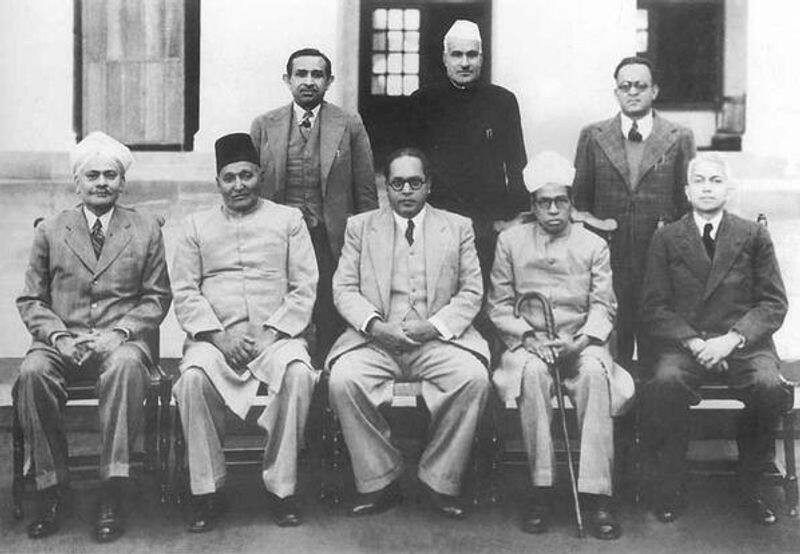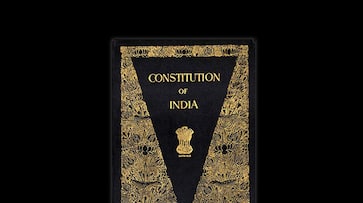As India is celebrating its 70th Republic Day, here are 10 facts about the Indian Constitution.
India is celebrating its 70th Republic Day, today, the day Indian Constitution came into effect in 1950. It was a raining cats and dogs outside the parliament, the day constitution was signed, and this was considered to be a good omen by the assembly members. One signature which is not there in the Constitution is that of Mahatma Gandhi. Here are 10 facts about the Indian Constitution.

1. Origin
The Constitution was adopted on November 26, 1949, while it came into force on January 26, 1950. The first session of the Assembly was held on January 24, 1950, which unanimously elected Dr. Rajendra Prasad as the President of India.
2. The time it took
The Constituent Assembly took almost three years (two years, eleven months and seventeen days) to complete the historic task of drafting the Constitution for Independent India. The Constituent Assembly had 284 members, out of which 15 were women. The Drafting Committee submitted the draft in November 1949, after which they took three more years to complete it.

3. Darfting committee
The all-important Drafting Committee, which bore the responsibility of drafting the Constitutional document was formed on August 29, 1947. Its members were:
Dr. B.R. Ambedkar
Diwan Bahadur Sir Narasimha Gopalaswami Ayyangar
K.M. Munshi
Sir Syed Muhammad Saadulla
N.Madhav Rao
D.P.Khaitan (T Krishnamachari, after Kahitan's Death in 1948)
4. A labour of love
The Constitution of India was not typeset or printed but was handwritten and calligraphed in both English and Hindi. Prem Behari Narain Raizada (Saxena) of Delhi wrote the entire constitution in a flowing italic style in the best calligraphic tradition of our country. The task was completed in 6 months. 254 pen-holder nibs were used and No. 303 Nib was used for this calligraphy. It was decorated by artists from Shantiniketan including Beohar Rammanohar Sinha and Nandalal Bose.

5. The National Emblem
On January 26, 1950, India also adopted Sarnath, the Lion Capital of Ashoka with the wheel, bull, and horse as the national emblem of India.
6. World’s Longest Constitution
The Constitution of India is considered the world’s lengthiest document because originally it contained 395 Articles divided into 22 parts and B Schedules. At present it contains 448 Articles and 12 Schedules as a result of 98 amendments effected in the constitution since 1950.

7. The Indian Constitution draws bits and pieces from other world constitutions like:
A. Irish Constitution – Directive principles have been derived from the Irish constitution
B. British Constitution – Parliamentary form of government with a cabinet system having accountability to the lower House and parliamentary privileges.
C. US Constitution – Fundamental rights, the Supreme Court, the post of Vice-President
D. Canadian Constitution – The Federal system, union-state relations and distribution of powers between the union and the states
E. Australian Constitution – The concurrent list, provision of trade and commerce
F. German (Weimer) Constitution – Emergency provisions
G. French Constitution - The concepts of Liberty, Equality and Fraternity
H. Japan Constitution - The law on which the Supreme Court functions
8. India, the Union
It was Dr B.R. Ambedkar who clarified that India was a Union and no state had the right to secede from the Union. The first article of the Constitution says, “India, that is Bharath, shall be a Union of states”.

9. Significant Addition
The Preamble of the Constitution of India states that India is a Sovereign Socialist Secular Democratic Republic. The term “Socialist” was added later in 1976 through the Constitution 42nd Amendment Act, 1976.
10. Original hand-written copies of Constitution
The original hand-written copies of the Constitution are kept in helium-filled cases in the Library of Parliament House.
Last Updated Jan 26, 2019, 10:40 AM IST









![Salman Khan sets stage on fire for Anant Ambani, Radhika Merchant pre-wedding festivities [WATCH] ATG](https://static-gi.asianetnews.com/images/01hr1hh8y86gvb4kbqgnyhc0w0/whatsapp-image-2024-03-03-at-12-24-37-pm_100x60xt.jpg)
![Pregnant Deepika Padukone dances with Ranveer Singh at Anant Ambani, Radhika Merchant pre-wedding bash [WATCH] ATG](https://static-gi.asianetnews.com/images/01hr1ffyd3nzqzgm6ba0k87vr8/whatsapp-image-2024-03-03-at-11-45-35-am_100x60xt.jpg)


